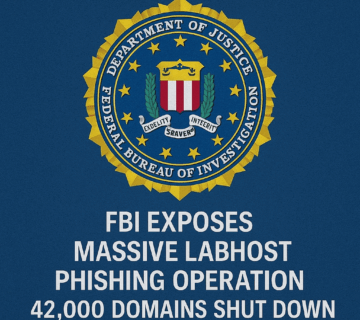
FBI Exposes Massive LabHost Phishing Operation: 42,000 Domains Shut Down
The sources describe a major FBI operation that shut down LabHost, a significant phishing-as-a-service (PhaaS) platform used by cybercriminals. Operating from 2021 to 2024, LabHost provided sophisticated tools and infrastructure for launching large-scale phishing attacks, including tailored websites and smishing capabilities. This led to the compromise of millions of credentials and credit card numbers through 42,000 phishing domains discovered by investigators. The FBI's action highlights the growing threat of commercialized cybercrime (CaaS), emphasizing the need for organizations to implement proactive cybersecurity measures like employee training, advanced threat monitoring, and incident response planning. ... Read More